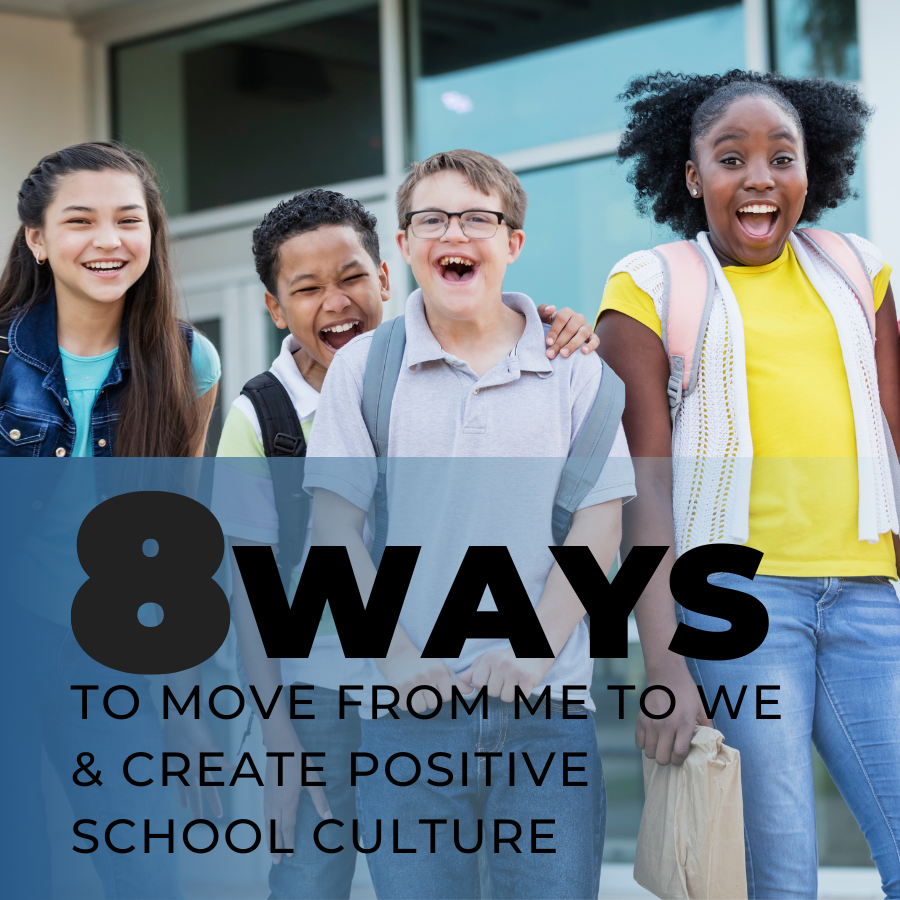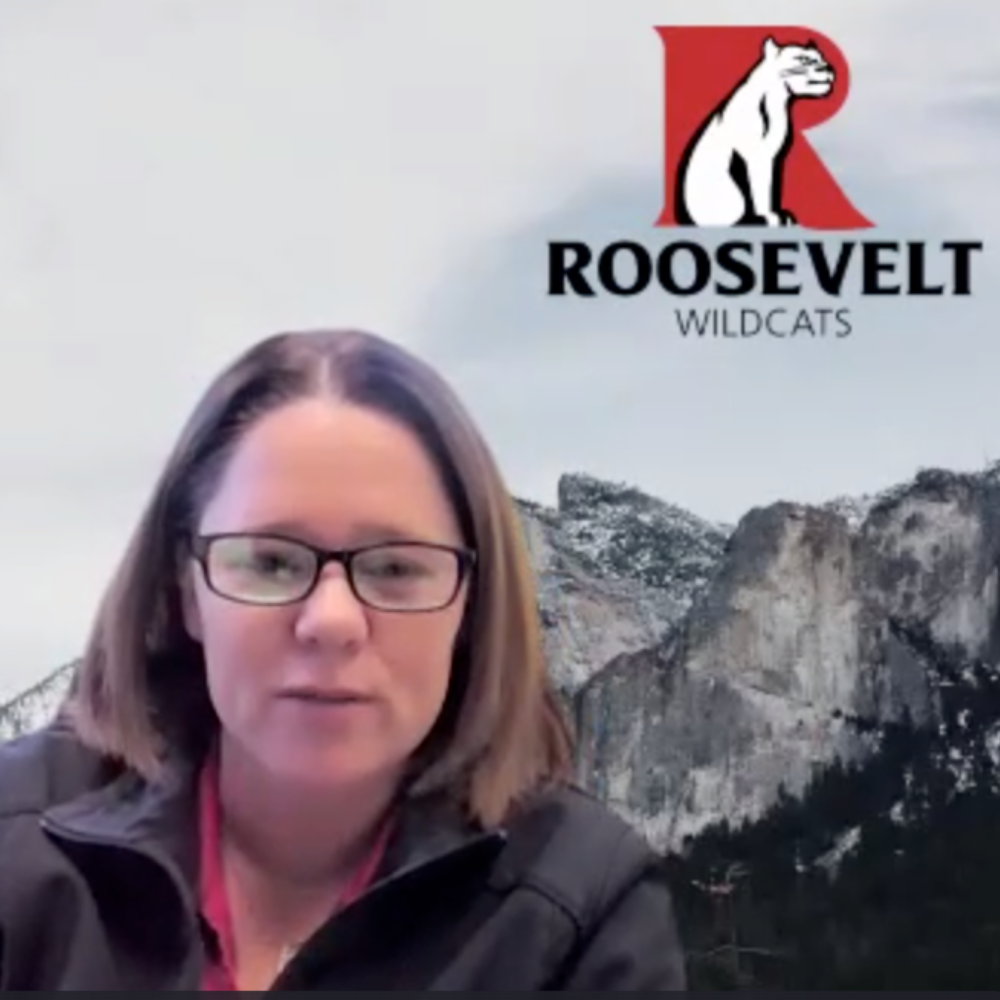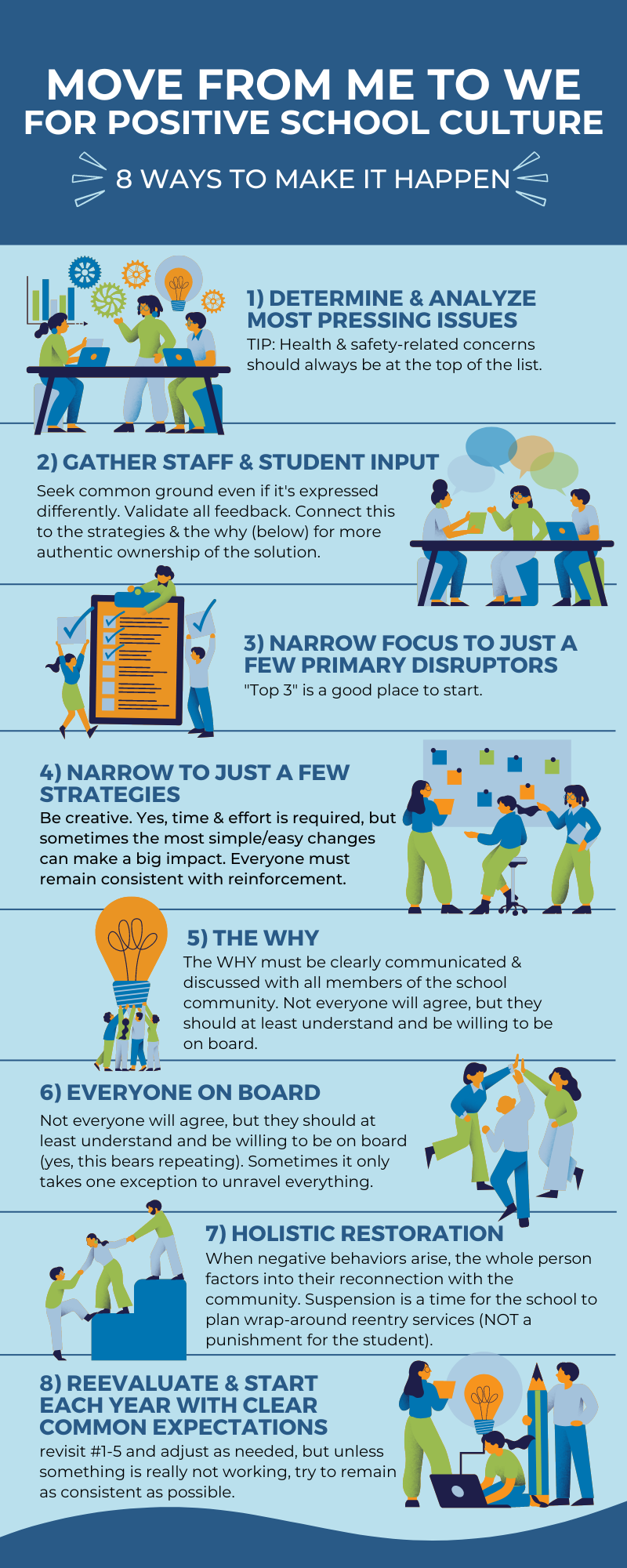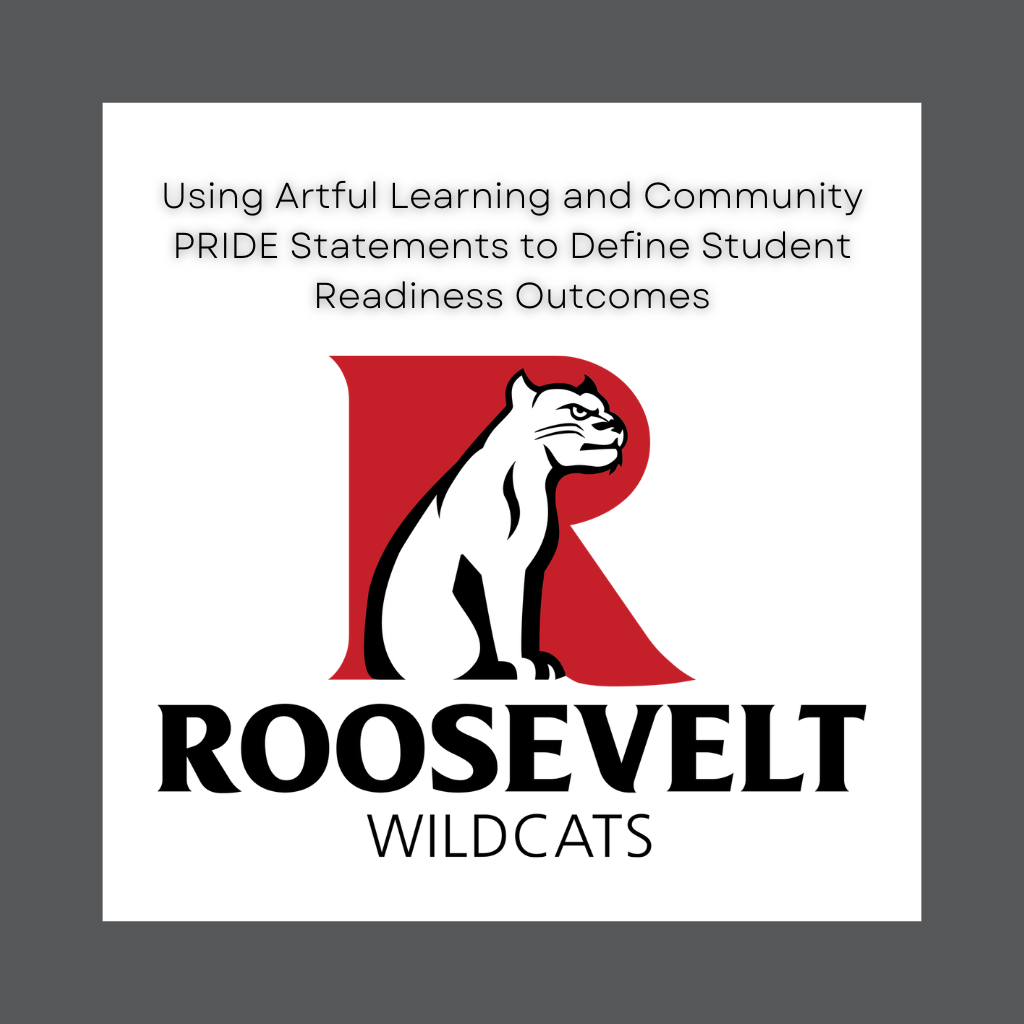8 Ways to Move from Me to We & Create Positive School Culture

Principal Amy Zilk knows that a new leadership role is both rewarding and challenging. She took the helm of Roosevelt Middle School in Vista Unified School District, coming off an atypical year of 187 student suspensions, Just as her journey as RMS’s principal began, she found herself with one unfilled assistant principal position and her only other AP out sick. Then Amy fell ill. For a week, the school stayed afloat with the help of rotating admin subs, but just barely: Forty students were suspended for fighting stemming from that week and the month that followed. But instead of allowing these overwhelming challenges to steer them off-course, Amy and her team used them to map out a new, more positive, way forward.

Amy emphasized how critical creative problem-solving is necessary for both uncovering root problems and implementing lasting change. Through canvassing staff and students, the RMS team identified their Top 3 Disruptors: 1) cell phone use, 2) tardies, and 3) play fighting. On the surface, it may be difficult to see how these problems equate to a school feeling like “Fight Club” resulting in mass suspensions, but by listening to staff and — especially — students, it became clear. Students were using their phones to take and share inappropriate photos of other students. This often occurred in bathrooms, making students feel unsafe using them. This led students to use the bathroom after break periods to avoid encountering other students, but this directly contributed to the schoolwide issue of tardies. The tardies resulted in the hallways becoming clogged and pushed students into cramped areas, igniting stress and exasperating the tardy problem. Students were also engaging in play fighting, but with tensions heightened over the privacy concerns with the inappropriate photos as well as frequently being stuck in crowded spaces, the “play” aspect was often eliminated. All of this resulted in an unsafe and stressful environment for students and staff alike. These examples exemplify how our physical environment plays a significant role in our emotional state, behavior, and overall wellbeing, and why as educational leaders, we must keep this in mind as we consider root causes and solutions for problems on our campuses.
One of the beautiful things about this school is it’s a family. Our family may have gone through a little bit of rough times last year, but we are definitely a family. And we care about each other, so we want to see each other succeed.
Amy Zilk
Even though students didn’t want to lose their cell phone privileges, they did express their fears and concerns about the inappropriate photography activity on campus and fears of using the bathroom. They also expressed concern about staff yelling at them in the hallways, and it was discovered that this stemmed from staff feeling they had to raise their voice to be heard above the jam-packed hallways. Getting to class on time and not blocking the halls was something everyone needed. To help alleviate this problem, the school implemented a third lunch period, so each grade level had a separate time, and fewer students were passing in the hallways at once. This requires admin to be on lunch duty for two and a half hours, but Amy says it’s more than worth it. Not only has it eased the crowded halls and tardies, but the staff takes the last few minutes of each lunch period to call the students together to connect with them, share updates and announcements, and help students relax and prepare for “class mode.” Teachers have noticed students are much more calm and ready for learning when they return from lunch now which results in more instructional time since there are fewer behavior concerns to address in class.
So when leadership decided to strictly enforce a policy to keep cell phones in backpacks at all times, not everyone agreed, but they understood why it was best and necessary: both for the problems it addressed and for the positive environment it created. Students understand that this directly addresses their fears and concerns, so even if they don’t like it, they know they’ve been heard and that it’s for them. At every step, everyone knows that this is all for the students.
Amy is clear that this type of change requires a lot of time, patience, effort, compromise, and most importantly, a united front. She stresses the importance of truly listening to everyone, identifying a few core problems, finding the common ground, and then focusing on just a few key strategies. These can be as small as teachers and staff standing outside their doors during passing periods to banding together to eliminate cell phone disruptions to as big as restructuring the master schedule. The goal is that everyone can get on board with the changes — even if they don’t necessarily agree. None of this is possible from the actions of any single person — even if that person is the captain; it takes the whole crew to achieve smoother sailing.
Check out the companion Toolkit post for ways you can steer your own school toward a more positive culture.












Responses